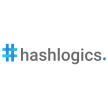NFT marketplace development
NFT marketplace development company

NFT Marketplace Development
When planning to develop an NFT marketplace, it is important to target a specific audience and discover the challenges they face. The challenges will depend on the expectations of the potential customers. Experts recommend betting on a vertical market to meet the demands of a niche group of consumers, while a horizontal market meets the needs of a wide array of consumers. However, it is important to choose the right market model to ensure success. Listed below are some tips to help you with your decision-making process.
UI/UX design
A successful eCommerce NFT platform needs to incorporate features such as buying and placing bids. It should also integrate its own wallet so that users can manage their NFTs without leaving the platform. Moreover, a rating system must be in place to help users find relevant tokens. Another interesting feature is an auction, which is interesting to non-traders but generates significant traffic to an eCommerce NFT platform.
As a marketplace developer, it is essential to consider a user's experience when deciding how the UI/UX should be designed. The user interface should be easy to understand, yet it should be visually appealing to the eye. A good UI/UX design strikes a balance between aesthetic appeal and usability. It should be appealing to both users and developers, and should be intuitive for both.

Back-end development
While NFT Marketplace development is a relatively simple process, there are some things you need to know about the platform before you get started. These factors will determine the price of the project. The complexity of the features and geography of the marketplace will affect the cost. A NFT marketplace will require normal validation and a re-discovery phase. During this time, the platform will be subject to bugs and vulnerabilities.
The first step in non-fungible token development is to identify a niche in the market and brainstorm the structure of the market. It can be difficult to find an NFT development service, but once you have selected a blockchain, you should consider the user experience. The design should be user-friendly and attractive. If you want your users to browse your product faster, you should incorporate features that help them find what they are looking for.
User flow
The development of a NFT Marketplace requires a unique set of requirements. As a decentralized app, most of the info is confirmed on a blockchain and the back-end code passes the logic to the decentralized part. While the process may seem simple at first, there are several things to keep in mind. This article will look at the user flow during the NFT marketplace development process. Here are some tips for developing a decentralized app.
Flow is a cryptocurrency protocol that is suited to NFTs. Its implementation helps developers create applications on the Ethereum network with the help of smart contracts. These contracts are immutable and make it secure by preventing any changes to the transactions. Flow offers improved flexibility and optimization. With Flow, smart contracts can be released in beta form to the mainnet and the author has complete control over the code. In addition, the platform is easy to scale.
Costs
The first step in the development of an NFT marketplace is to create a project document. The project documentation contains the architecture of the application, various use cases and functionalities, and frames the solution to the client's requirements. Documentation plays a crucial role in the development of any application, as developers cannot remember all the requirements and expectations of the clients. Thus, a well-defined documentation is essential for successful application development.
The costs for the development of an NFT marketplace website depend on the number of features and their complexity. The development of the website will cost approximately $25,000, which does not include hosting resources and the time to monitor listings. The costs will increase as the site develops, but a good budget will cover all of these. In addition, the startup capital needed is small compared to the costs of running an NFT marketplace. After all, the business costs of running a marketplace will soon pay off in the form of a high-quality website.
Target audience
Developing a digital marketplace is not an easy task. You need to answer certain questions first. Once you have answered these questions, you can describe your ideas in text or with visual diagrams. You can also prepare technical documentation and plan further development of your marketplace. Once these steps are completed, you can move ahead to designing the NFT marketplace. Boosty Labs is a trusted NFT development company that can meet all your needs.
While building an NFT marketplace, make sure your content is SEO friendly. It helps increase your website's search engine rankings. It also helps develop your brand's reputation by building a community. To create a community around your product or service, create a blog and post SEO-friendly content about it. You can also conduct paid campaigns and subscribe to newsletters. To create an NFT Marketplace, you need to understand the audience of your product or service.
About the Creator
Peter Anderson
Hashlogics is a professional NFT marketplace development company helping businesses to create own NFT marketplace with a simple user interface and high security. We ensure an artist can sell their work digitally to a worldwide audience






Comments
There are no comments for this story
Be the first to respond and start the conversation.